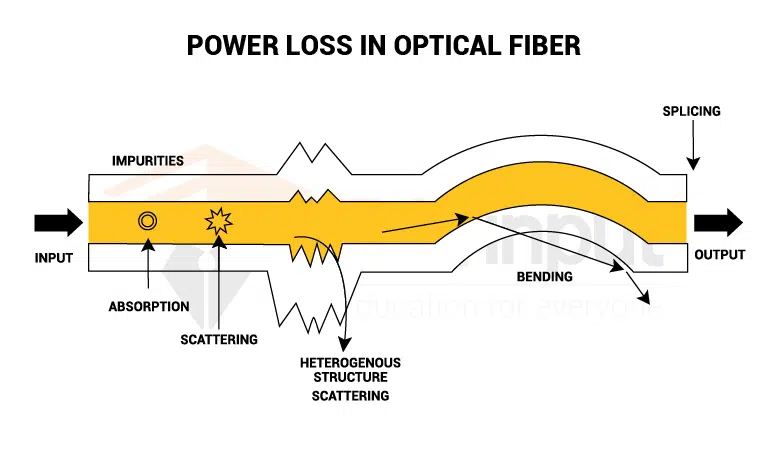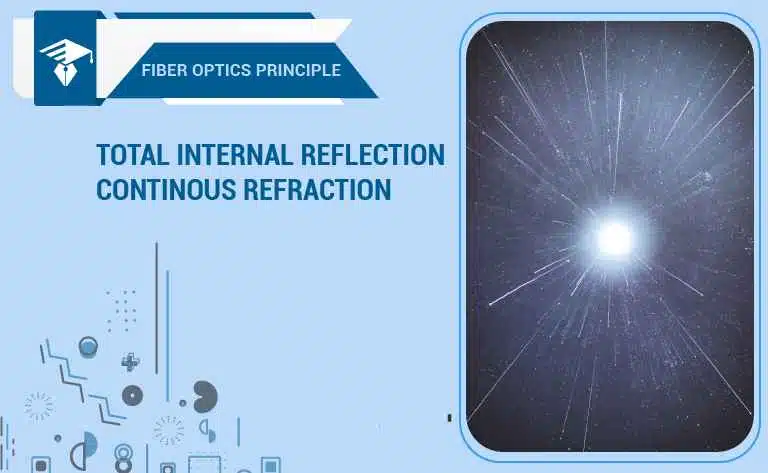Power Losses in Optical Fiber | Advantages of Graded Index Fiber
The power losses in optical fiber are Absorption loss, scattering loss, and dispersion loss. There are many types of optical fiber. The total internal reflection is the basic Fiber Optics Principle. The optical fiber Communication system is widely used But there are some power losses in optical fiber.
Power losses in optical fiber
There are three major causes of power losses in fiber optics.
- Absorption
- Scattering
- Dispersion

Power losses through absorption
When a light signal travels along fibers by multiple reflections, some light is absorbed due to impurities in the glass.
Power losses through scattering
Some of it is scattered by groups of atoms which are formed at places such as joints when fibers are joined together. Careful manufacturing can reduce power loss by scattering and absorption.
Power losses through dispersion
The information received at the other end of a fiber can be inaccurate due to the dispersion or spreading of the light signal. Also, the light signal may not be perfectly monochromatic. In such a case, a narrow band of wavelengths is refracted in different directions when the light signal enters the glass fiber and the light spreads.
Example of Power loss through dispersion:
Let’s consider the paths of light of three different wavelengths λ1, λ2, and λ3. λ1 meets the core-cladding at the critical angle and λ2, and λ3 at slightly greater angles.
All the rays travel along the fiber by multiple reflections. But the light paths have different lengths. So the light of different wavelengths reaches the other end of the fiber at different times.
With a step index fiber, the overall time difference may be about 33ns per km length of the fiber. The signal received is, therefore, faulty or distorted.
Advantages of graded index fiber
Although the different wavelengths take different paths and are internally reflected at different layers, still they are focused at the same points the X and Y, etc. It is possible because the speed is inversely proportional to the refractive index.
n=c/v
So the wavelength λ1 travels a longer path than λ2 or λ3 but at a greater speed.
Despite the dispersion, all the wavelengths arrive at the other end of the fiber at the same
time. Using a graded index fiber, the time difference is reduced to about Ins per km.






Leave a Reply